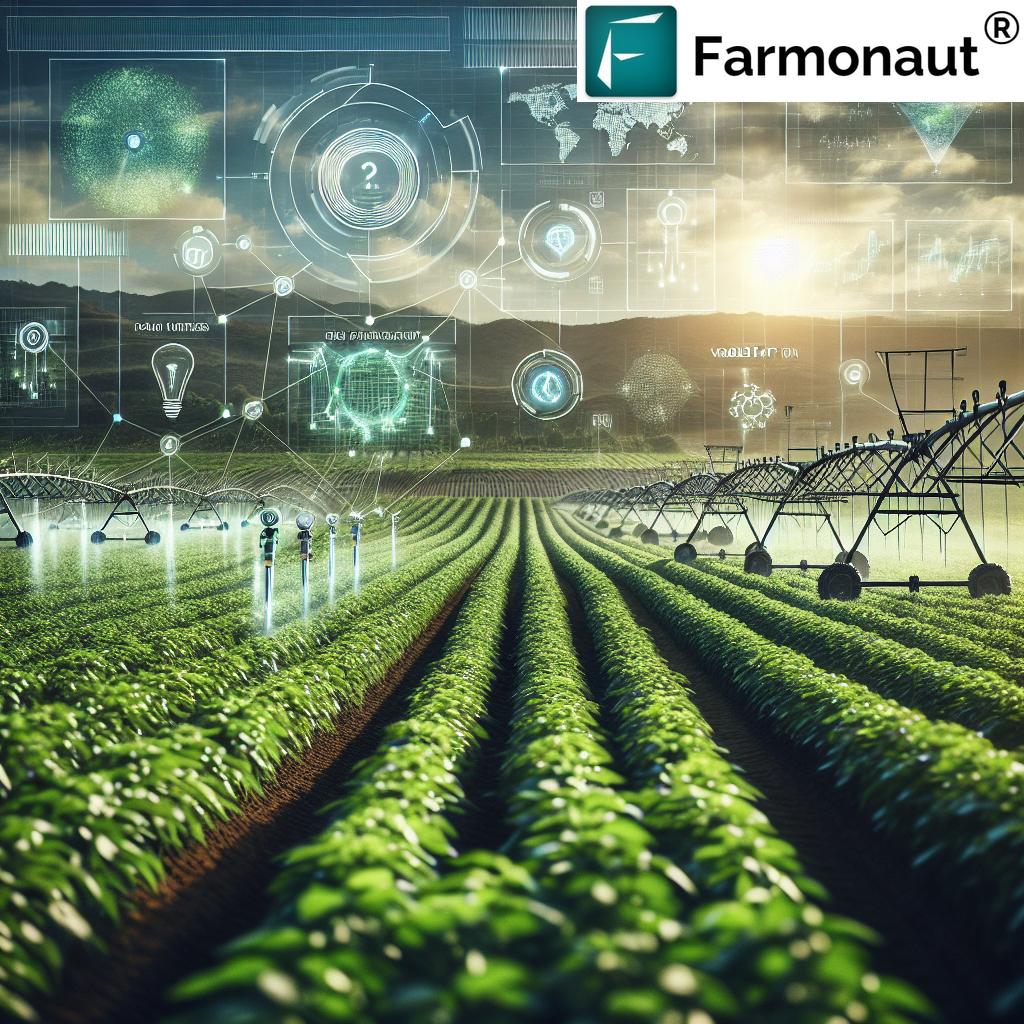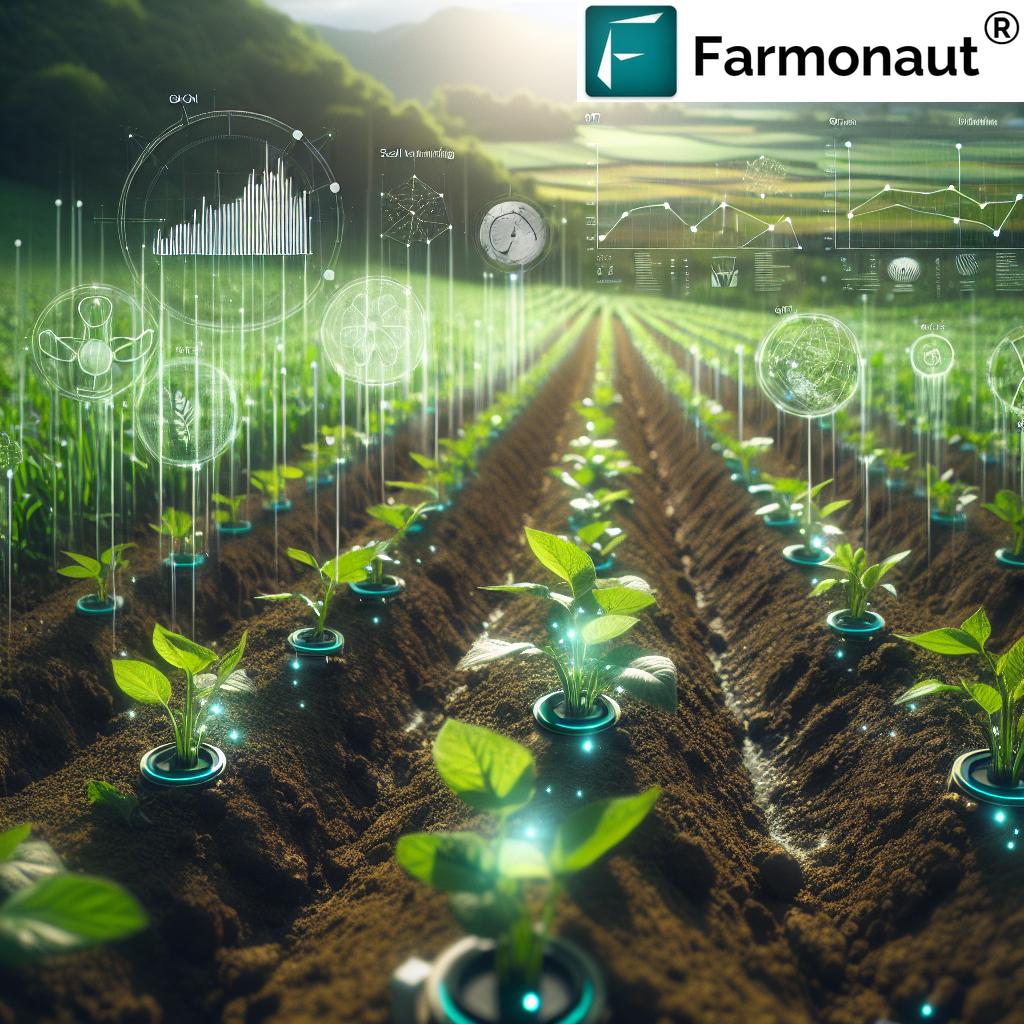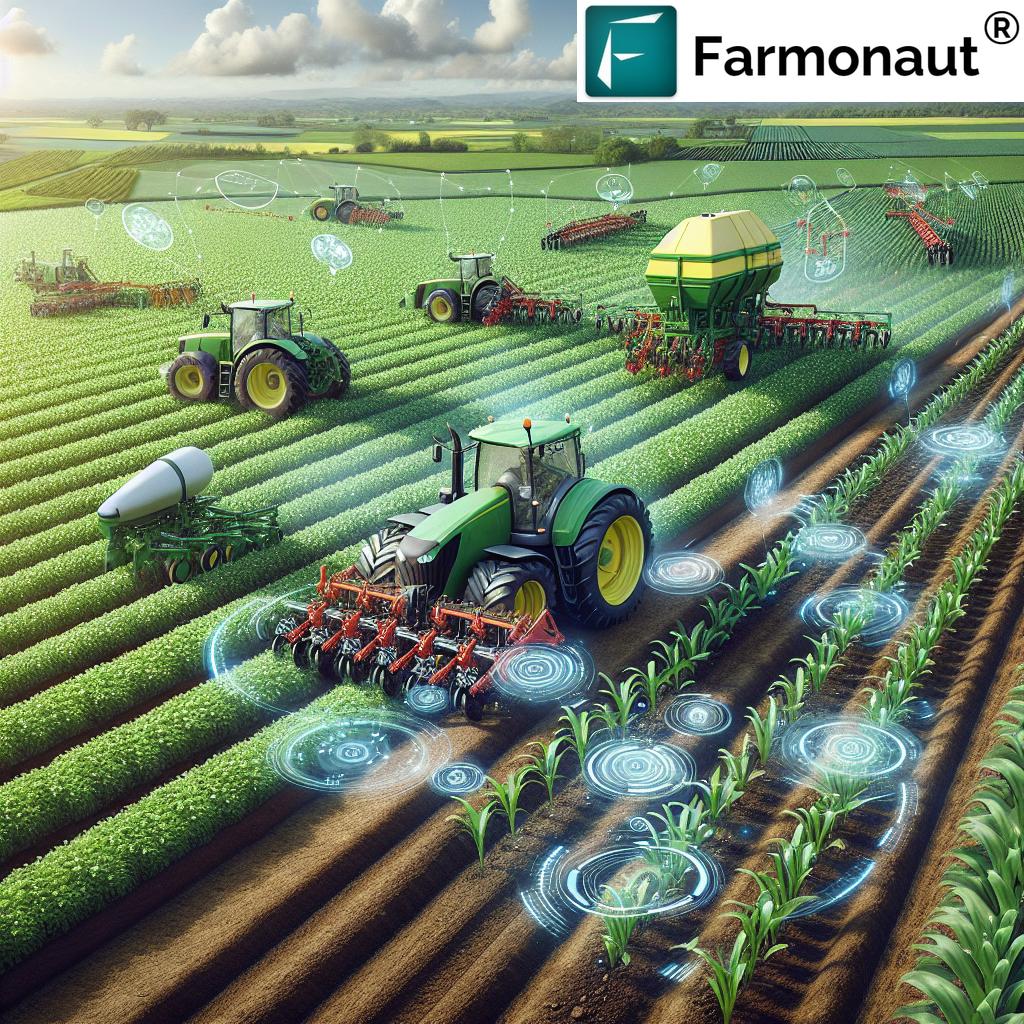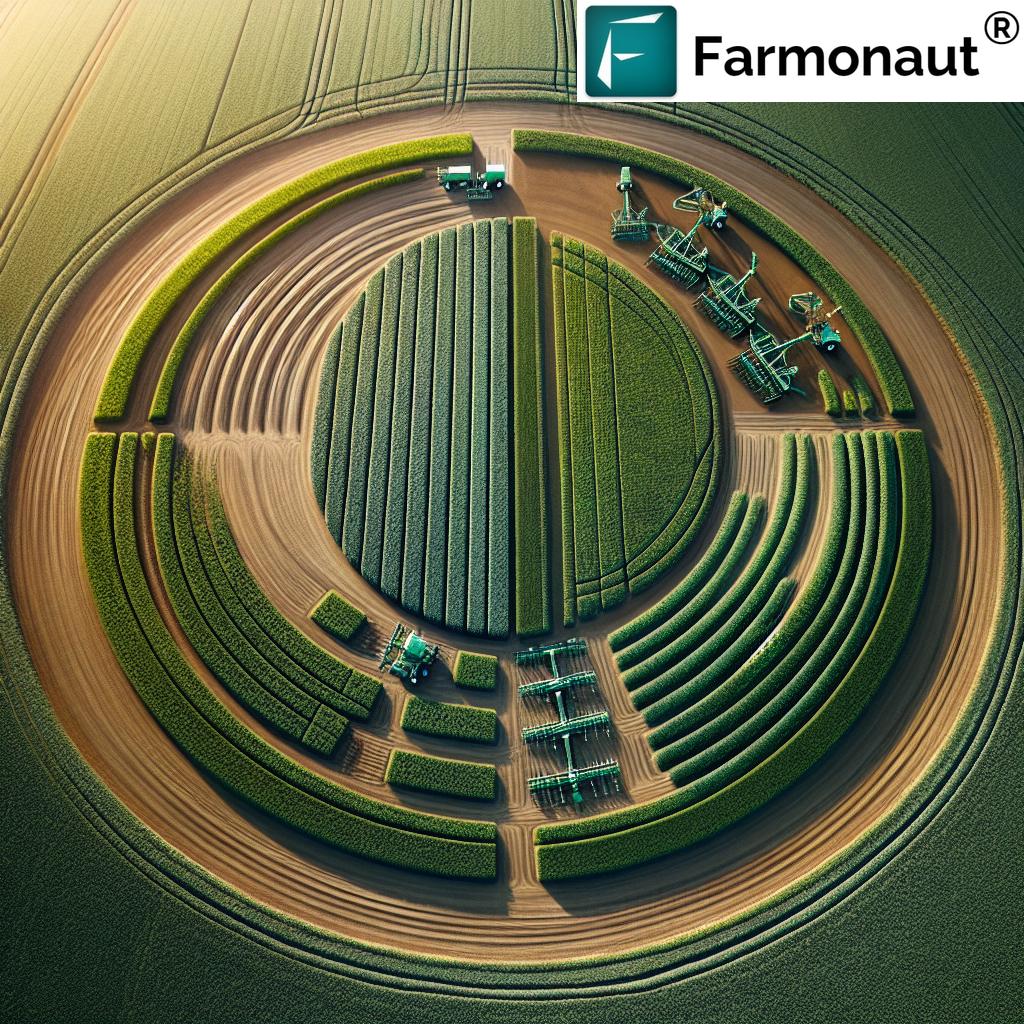Boost Yields Fast: Precision Grow IoT Farming Technologies
Introduction: Precision Agriculture & IoT
The global challenge of feeding a rapidly growing population, coupled with the increasing pressure to adopt sustainable agriculture practices, calls for smarter and more efficient methods of farming. Enter precision agriculture—an approach revolutionizing traditional farm management by leveraging data, digital connectivity, and IoT in farming. In this new era, precision is not just a buzzword; it’s the key to optimizing every aspect of agricultural operations, from crop health monitoring and smart irrigation systems to real-time analytics and resource control.
At the heart of this revolution are advanced IoT devices and sensors that enable us, as farmers and agribusinesses, to collect and analyze data across multiple environmental and operational parameters. This data-centric approach is defining the future of agriculture, transforming how we make informed decisions, optimize resources, and boost yields.
Throughout this comprehensive guide, we will uncover what makes precision farming technologies so powerful, explore actionable examples like variable rate application (VRA), delve into how solutions such as Farmonaut are democratizing access to advanced farming tools, and showcase the measurable benefits of IoT and data analytics in agriculture.
Core Components of IoT in Precision Agriculture
Modern precision agriculture hinges on the integration of core IoT technologies within our farm operations. To fully grasp the opportunities and benefits these technologies present, let’s explore their fundamental components:
1. Sensors and Data Collection
At the foundation of IoT in farming are farm sensors and monitoring devices. These technologies continuously gather critical information about the farm’s physical environment—soil, air, crop, and animal health. Types include:
- Soil moisture sensors: Provide real-time readings of soil water content for smart irrigation systems.
- Weather stations: Monitor weather patterns such as rainfall, humidity, wind speed, and temperature.
- Crop health monitoring devices: Employ imaging (spectral, thermal) and on-plant sensors to identify stress, disease, or nutrient deficiency.
- Livestock monitoring devices: Track animal activity, location, feeding, and vital signs.
2. Data Transmission & Connectivity
The collected data from sensors is transmitted to a central location—either the cloud or a local farm network—using reliable wireless connectivity networks such as Wi-Fi, cellular 4G/5G, or Low Power Wide Area Network (LPWAN) solutions like LoRaWAN. Robust connectivity ensures that data reaches analytics platforms in real time, forming the backbone of actionable decision support.
3. Data Analysis, Decision Support & Automation
Raw data becomes valuable only through analysis. Advanced analytics platforms employ machine learning algorithms to detect patterns, predict yields, optimize resource allocation, and flag risk factors such as pest infestations or irrigation issues. These insights are then translated into automated actions or clear recommendations, streamlining complex farm management practices.
How IoT Technologies Optimize Farming Practices
How do these IoT systems translate into real-world advantages for our farms? Let’s break down the key applications driving the rapid adoption of precision agriculture technologies in the field.
A. Smart Irrigation Systems
Smart irrigation systems leverage soil moisture sensors and local weather data to automate and optimize water usage. By delivering only the amount of water required by plants at a specific moment, these systems:
- Reduce water waste by up to 30%.
- Prevent overwatering, lowering disease risk and promoting root health.
- Enable remote control and scheduling via mobile or web apps.
Learn how to maximize your resource management on the Crop Plantation & Forest Advisory Platform.
B. Crop Health Monitoring & Early Disease Detection
Continuous crop health monitoring is achieved using multispectral imaging, on-farm sensors, and predictive software. Benefits include:
- Early detection of plant stress, disease, and pest pressure—up to 40% faster than traditional scouting (“Crop health sensors enable farmers to detect plant stress 40% faster than traditional scouting methods.”).
- Precise, data-driven interventions such as targeted pesticide use.
- Reduced waste and improved crop uniformity and yield.
Farmonaut’s satellite-based crop health monitoring stands out by providing NDVI (Normalized Difference Vegetation Index), soil moisture, and crop stress insights without the need for expensive ground hardware. Explore more in the Farmonaut App.
C. Variable Rate Application (VRA)
Variable Rate Application (VRA) takes the guesswork out of input distribution:
- Applies fertilizers, seeds, or pesticides at different rates, based on soil fertility, crop stage, and sensor data.
- Optimizes yield response, reducing excess chemical use and minimizing environmental impact.
- Improves overall resource efficiency and profitability.
Integrate your precision inputs with ease—see Farmonaut’s Large Scale Farm Management Platform for seamless coordination.
D. Livestock Monitoring Devices & Automated Animal Health
IoT-enabled livestock monitoring devices offer real-time animal tracking and health analytics, ensuring:
- Prompt detection of health changes, facilitating early interventions.
- Enhanced resource management and optimized feeding schedules.
E. Smart Greenhouses & Automated Climate Control
Smart greenhouses use sensors to manage temperature, humidity, and light levels, orchestrated by intelligent control systems. This automation:
- Delivers optimal growing environments for high-value crops.
- Boosts yield and reduces energy waste.
Comparative Table: Impact of Precision Agriculture IoT Technologies
To help us visualize the tangible value of precision farming technologies, here’s a comparative table summarizing their core functions and expected benefits:
| Technology Type | Primary Function | Estimated Yield Improvement (%) | Water Savings (%) | Additional Benefits |
|---|---|---|---|---|
| Smart Irrigation Systems | Automated, sensor-driven water management | 8–15 | 20–30 | Decreased labor, minimized disease risk, resource optimization |
| Drone-Based Crop Monitoring | Aerial imaging for crop health and stress identification | 10–20 | N/A | Faster detection, targeted spraying, improved yield uniformity |
| Soil Moisture Sensors | Real-time soil moisture data for irrigation decision-making | 3–10 | 15–25 | Enhanced water use efficiency, crop health improvement |
| Variable Rate Application (VRA) | Field-zone based fertilizer & pesticide distribution | 7–14 | 10–15 | Reduced input costs, lower environmental impact |
| Livestock Monitoring Devices | Animal health, behavior & GPS-based tracking | 5–12 | N/A | Reduced disease losses, streamlined animal management |
| Smart Greenhouse Control | Automated climate management | 10–25 | 10–40 | Energy efficiency, year-round production |
Farmonaut: Revolutionizing Farming Globally
As a pioneering force in precision agriculture, Farmonaut is transforming how farms—big and small—access the benefits of advanced IoT and machine learning-driven solutions. What sets Farmonaut apart? It cuts out costly hardware by leveraging satellite imagery and artificial intelligence (AI) to deliver affordable, scalable, and easy-to-use crop management tools directly through mobile, web, and API channels.
Our Farmonaut platform provides key features such as:
- Real-time crop health monitoring using multispectral satellite imagery
- AI-based farm advisory via the Jeevn AI system for tailored recommendations
- Blockchain-based traceability for transparent, fraud-resistant supply chains
➔ Discover more about Farmonaut Traceability - Fleet & resource management for better logistics and cost reduction
➔ Learn about Fleet Management Benefits - Carbon footprinting to track and reduce environmental impact
➔ Visit the Carbon Footprinting Solution - Flexible subscriptions and scalable module-based services for farmers, agribusinesses, governments, and research organizations
We also extend API access (see: Farmonaut Satellite & Weather API and Developer Docs) to empower integrations with existing agricultural systems or third-party agritech platforms.
Precision Farming Applications: From Smart Irrigation to AI Advisories
Let’s dive deeper into the real-world applications where precision agriculture and IoT make the most impact:
1. Crop Health Monitoring & Predictive Analytics
Farmonaut’s crop health monitoring suite gives us, as farm managers, a bird’s-eye view—literally—using satellite-based imaging and machine learning. We can:
- Detect plant stress, disease, or pest infestations early, allowing for timely interventions.
- Estimate yield using predictive analytics based on multisource farm-level data.
- Monitor soil moisture and nutrient levels, pinpointing zones needing attention.
This approach minimizes unnecessary pesticide sprays and maximizes crop productivity—with data-driven decisions every week or even every day.
2. Smart Irrigation & Water Management
Especially in water-scarce regions, optimal irrigation can mean the difference between profit and loss. Smart irrigation systems factor in soil sensor readings, crop needs, and local forecasts to automate watering. Results include:
- 30% water savings (compared to manual watering or blanket irrigation)
- Improved yield through uniform water delivery
- Lower incidence of disease due to regulated moisture profiles
3. Variable Rate Application for Inputs
With variable rate application (VRA), fertilizer, pesticide, or seed are applied only where and when they’re needed, based on soil, crop, and weather data. The outcomes:
- Reduced chemical waste and input costs
- Enhanced crop uniformity and yield
- Environmentally responsible farm management
4. Livestock Health & Resource Management
For mixed farming setups, IoT-powered livestock monitoring devices track every move, vital sign, and health metric of animals:
- Early disease detection, minimizing herd losses
- Tailored feeding and breeding schedules for increased productivity
5. Fleet, Asset & Resource Management
Through satellite-based tracking and analytics, Farmonaut’s fleet management solution reduces equipment downtime and optimizes logistics—meaning less waste and improved bottom-line performance for our farm businesses.
Discover Fleet Management Benefits for effective large-farm administration.
6. Blockchain-based Traceability & Compliance
Blockchain underpins supply chain transparency—from seed to supermarket shelf. Using Farmonaut Traceability, every critical input, operation, and output is recorded, building consumer trust and meeting modern compliance standards.
7. Carbon Footprinting & Sustainable Certification
Regulatory compliance and brand reputation now depend on measuring sustainability. Farmonaut’s Carbon Footprinting platform calculates a farm’s greenhouse gas emissions in real-time, suggesting actionable steps for reduction and environmental stewardship.
See all services, guides, and solutions in one place on the Agro Admin Platform.
Unlocking Sustainable Agriculture: Benefits & Value
Why are so many farmers, agribusinesses, and policymakers investing in IoT-powered precision agriculture? Here’s how these technologies deliver real and measurable value across the board:
- Resource Optimization: Sensors and real-time analytics lead to smarter usage of fertilizers, pesticides, water, and machinery.
- Increased Productivity: Crops, livestock, and operations can all be tuned for optimal yield with immediate feedback on environmental changes and management decisions.
- Sustainability & Environmental Stewardship: Minimized input use and energy efficiency mean lower emissions, less pollution, and healthier ecosystems.
- Risk Management: Early detection of pests, diseases, and weather threats enable timely, targeted intervention—often saving entire harvests.
- Transparency & Marketability: Traceability and carbon tracking appeal to conscious consumers and add value throughout the supply chain.
Quick Access to Farmonaut’s Solutions
- Product Traceability: Build consumer trust and supply chain security via blockchain-based traceability systems
- Carbon Footprinting: Measure, report, and certify your farm’s environmental impact with accurate carbon analytics
- API Integrations: Use our public APIs for custom precision agriculture and research projects
- Crop Loan Verification & Insurance: Secure quick, transparent loans and protect crops with satellite-based verification tools
Navigating Challenges: IoT in Farming
The adoption of IoT in farming is not without obstacles. Being aware of these challenges allows us to plan better and extract the most value from our investments:
- Connectivity Issues: Reliable internet access, especially in rural or remote areas, can be limited. Low Power Wide Area Networks (LPWAN) such as LoRaWAN can help extend coverage.
- Data Security & Privacy: The collected farm data may be sensitive. Implementing robust security measures is vital to maintain farmer privacy and prevent misuse. Blockchain-based data storage (as in Farmonaut systems) offers a secure, tamper-proof way to handle these records.
- High Initial Investment: While subscription-based platforms like Farmonaut greatly reduce capital outlay, initial costs for network and sensor installation may be high for smallholders. However, savings in inputs and gains in yield often justify the investment over time.
- Integration with Existing Equipment: New IoT devices and platforms should easily connect with existing farm machinery and systems. Flexible API and modular design are preferred for a smoother digital transformation.
Tip: For developers or large organizations, Farmonaut API Developer Docs offer guidance for integrating satellite and weather data into any digital infrastructure.
The Future of Precision IoT Farming Technologies
Looking ahead, the intersection of AI, big data, high-speed connectivity (e.g., 5G), blockchain, and autonomous systems promises even more transformative changes in precision agriculture:
- Artificial Intelligence: Smarter analytics for yield prediction, pest detection, and automated resource allocation.
- Autonomous Farm Equipment: Drones, robotic planters, and harvesters will increasingly collaborate with IoT data feeds.
- Global Satellite Coverage: More frequent, higher-resolution satellite imagery will enable hyper-local, daily farm insights anywhere in the world.
- Sustainable Certification: Data-driven verification of green practices and carbon offsets will simplify certification and compliance.
To stay ahead, our teams must embrace continuous learning, leverage scalable digital platforms, and opt for integrated, affordable solutions—just like those offered by Farmonaut.
Farmonaut Subscriptions & Access
Farmonaut’s subscription model brings advanced precision agriculture within reach for everyone—from individual smallholder farmers to large agribusinesses:
Ready to experience the future of IoT-powered precision farming? Download the Farmonaut App now:
Frequently Asked Questions (FAQ)
What is precision agriculture?
Precision agriculture (also called precision farming) combines IoT sensors, data analytics, satellite imagery, and machine learning to optimize every aspect of farm operations—thus maximizing productivity and reducing resource waste.
How does IoT help in farming?
IoT in farming enables devices and sensors to collect and transmit data from fields, animals, and climate, allowing real-time monitoring, control, and management for best yields and minimum inputs.
What is variable rate application (VRA)?
Variable Rate Application is a method that uses field data to apply seeds, fertilizers, or pesticides in variable amounts site-specifically—reducing waste and enhancing yield.
Are these technologies affordable for small farms?
Platforms like Farmonaut make precision farming technologies affordable through subscription-based services and by removing the dependency on costly in-field hardware. The result? Real benefits for farms of any size.
Is my farm’s data secure with platforms such as Farmonaut?
Yes. Farmonaut leverages blockchain technology for traceability, ensuring both data integrity and privacy.
How do I get started with Farmonaut?
Access real-time crop monitoring, AI advisory, and more by downloading the app for Android or iOS, or sign up via the web portal.
Conclusion
The value delivered by precision agriculture and IoT-driven farming technologies is undeniable. Through a blend of real-time data, advanced analytics, automation, and digital traceability, we can boost yields, raise profits, and promote genuine sustainability in agriculture.
Farmonaut exemplifies how innovative, affordable tools can empower farmers globally—helping us make informed decisions and forge a sustainable future for our fields, food systems, and communities. By choosing scalable digital platforms and staying engaged with the latest technologies, we become active participants in the next agricultural revolution.
Ready to optimize your farm’s productivity? Join the world of precision farming and IoT. Let’s grow better—together.













